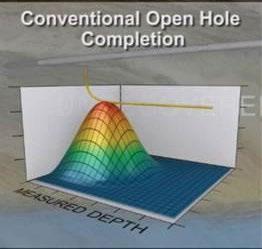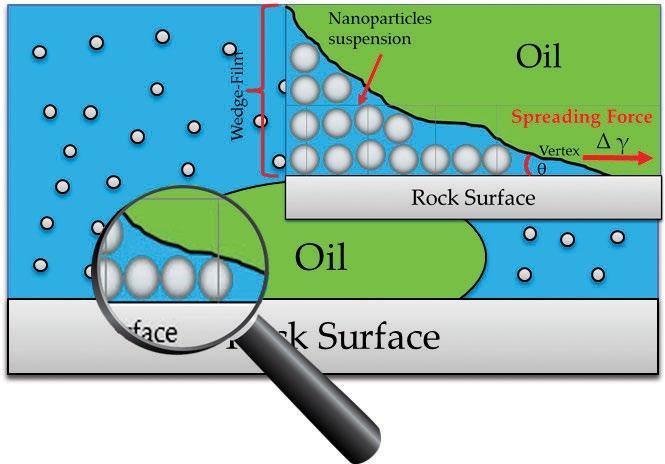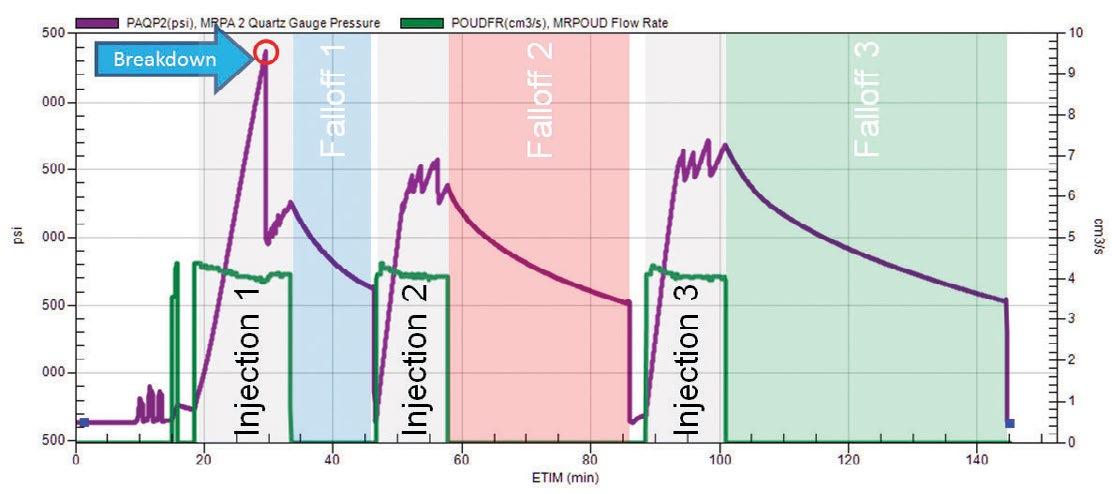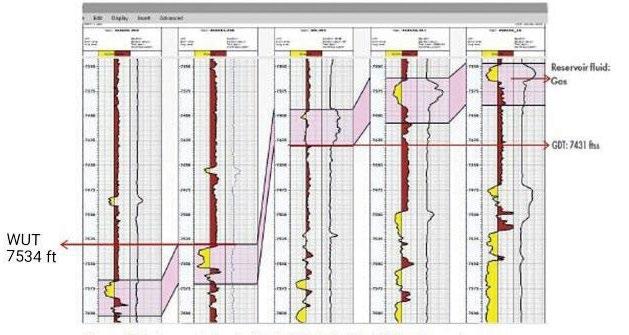
6 minute read
Advanced Technologies
Smart Completion Wells, The Future Oil Fields Management Solution – I Fields
Salma Chaabani - Completion & Wellbore Interventions Manager for West-North Africa, Baker-Hughes
Advertisement
Completions that enable reservoir engineers to monitor and control production or injection in at least one reservoir zone are known as intelligent completions. Such technology is proving to be a reliable and cost-effective way for better reservoir management. It protects operations from the risks associated with early water or gas breakthroughs, and from cross-flow between producing zones in the same well. Moreover, the technology helps operators to increase production rates, extend field life, and reduce the need for well interventions. Fit-for-purpose completion technology is now successfully applied to lower productivity wells in a variety of applications. Increasingly, the Middle East is using the technology to manage uncertainty in carbonate reservoirs. However, other applications for intelligent completions include gas lift optimization and sand management. Specifically when related to production allocation for several superposed zones and for waterfront advancement surveillance issues, managing uncertainties in reservoirs is a major challenge. This explains the need of dedicating observer wells for some strategic fields zones, as these wells allow long-term reservoir data acquisition for the different production/injection levels. For the past decades, the notion of I-Fields has been swiftly developed, basically among oil field operators. Industry-wide, companies realized that implementing promising technologies and integrating the huge influx of data is the way to cope with the existing production challenges. “The basic idea of the I-Field is to have an instrumented and information-intensive environment for operating oil fields. As you increase the number of sensors and controls, it allows you to connect the reservoir down the value chain and make the oil field look more like a factory”, said Don Paul, Chevron CTO, defining the term I-Field. Despite the variant names that operators attach to I-Fields, they share three fundamental components: Technology, Data and People. I-Fields promote downhole and surface assets, which allow better decisions. Oil companies, which have invested in I-Field solutions, typically see a sustained production increase
of 1-2%. However, some reports show increase as large as 5-10%. Additionally, the I- Field solution has given better awareness of reserves in place and can affect the balance sheet of an operator. For an oil company having a huge potential and big declining oil fields, the implementation of such concept will be a big gain for the production management, reservoir awareness & reserves allocation. For operators coping with complex technical and economic challenges, Intelligent Production Systems (IPS) are delivering numerous advantages, such as accelerated production and cashflow, reduced workover, and increased ultimate recovery. IPS has economic advantages such as reduced CAPEX and OPEX as well as increased NPV and ROI. The most challenging limitation to overcome is to produce sequentially, avoiding zones cross-flow. Moreover, we need to follow governmental regulations, which need accurate production allocation for each zone. In the past, oil fields were exploited by tapping into single zone formations or drilling through several formations, but perforating and producing one at-a-time. Another limitation is the restricted number of feedthrough ports within the tubing hanger, due to the commercial cost impact on changing the wellhead design. Hydraulic & Electric Control Intelligent Well Systems were developed to produce measurable benefits for hydrocarbon assets. This allows a selective single-zone active control within multilevel well completions.
Challenges: - Declining Wells Production Management. - Reserves Allocation. - Reservoir Uncertainties awareness. - Remote Areas. - Horizontal Wells:
- Uneven water/gas influx (heel-toe effect). - Heterogeneities along the wellbore. - Challenging production logging inside lateral. - Difficult well intervention operations.

Pore Level Displacement Mechanisms During Nanofluid Flooding
Abdelrahman Ibrahim El-Diasty - Reservoir Engineer at Technical Petroleum Services (TPS)
The nanofluid process has been considered in the oil and gas industry as a promising enhanced oil recovery method. However, practical application of this process is rather restricted. The main limitation of nanofluid field application is the complexity of its flow behavior in porous media.
Recent research studies show three different illustrations of the displacement mechanisms of the nanofluid flooding process.
First, the unique enabling mechanism of disjoining pressure. The nanoparticles in nanoparticle dispersion (NPD), nanofluid, form a self-assembled wedge-shaped film on contact with a discontinuous phase. This wedge film acts to separate formation fluids from the rock surface, thereby recovering more fluids than previously possible with conventional additives or fluids. The energies that drive this mechanism are Brownian motion and electrostatic repulsion between the nanoparticles. The electrostatic repulsion force between those particles will be bigger when nanoparticle size is smaller. When the amount of the nanoparticles increases, the force will also increase, as shown in Fig. 1.

This arrangement will exert additional pressure at that interface more than that in the bulk liquid. Particles present in the bulk fluid exert pressure, forcing the particles in the confined region forward and imparting the disjoining pressure force. When this force is confined to the vertex of the discontinuous phases, disFig. 1 - Nanoparticles Structuring in the Wedge-film Resulting in Structural Disjoining Pressure Gradient at The Wedge Vertex
placement occurs in an attempt to regain equilibrium.
Second, in the very small pore throats, the density difference between the particles and the water slows particles movement, causing their accumulation. Pressure builds up in the adjacent pores, forcing out the oil. Once the oil is freed, the surrounding pressure drops and the blockage gradually dissolves and the particles commence flowing with the water. This can be considered as temporary log-jamming, as illustrated in Fig. 2.
Third, the most widely used nanoparticles are silicon nanoparticles with a different wettability such as hydrophobic-lyophilic polysilicon nanoparticles (HLPN), lyophobic-hydrophilic polysilicon nanoparticles (LHPN) and neutral wet polysilicon nanoparticles (NWPN). The base fluids for stabilized dispersion depend on the nanoparticles’ wettability (alcohol was selected to disperse NWPN and HLPN, while water is the best for LHPN in the formation, etc.). The main role of nanofluid is the wettability alteration from oil wet to neutral wet or water wet or vice versa. Wettability alteration is achieved by adsorption of nanoparticles of the desired wettability on the rock. The HLPN alter the rock from water wet to oil wet, LHPN alter the rock from oil wet to water wet and NWPN alter either oil wet or water wet rock to neutral wet. The author suggests that the three different approaches for understanding the displacement behavior of nanofluids are not conflicting. They may all occur simultaneously. The adsorption of the particles acts at the same time the wedge-film effect takes place. On the other hand, the temporary log-jamming in the very small pores helps the water base fluid to take other less permeable paths through the rock, where there is oil. It will be forced out with the water flow.
The main factor in this process is the nanofluid system, in terms of particles size, concentration and chemical modification. Hence, the nanofluid system should be accurately seleced depending on the candidate reservoir properties, because at the time when the total surface area per unit bulk volume of the porous media is completely covered by particles that have been adsorbed on pore surfaces or entrapped at pore throats, wettability is determined by nanoparticle properties. As a result, further deposition of particles will only lead to reduction in porosity and permeability.











